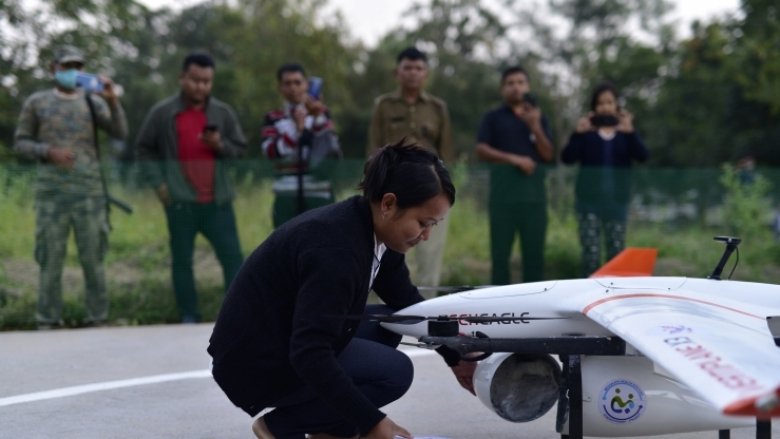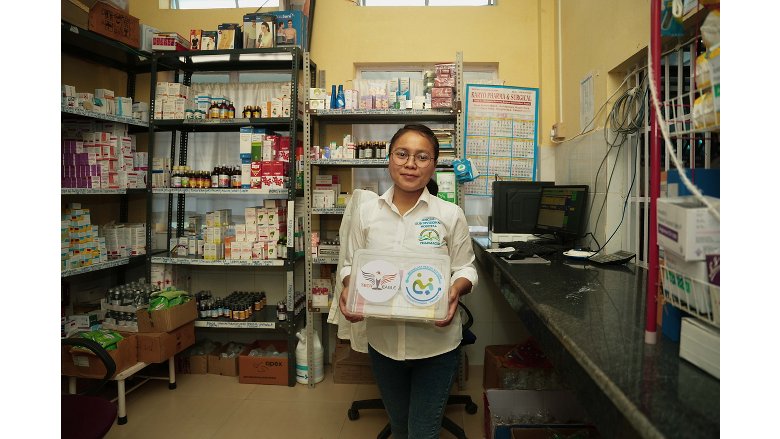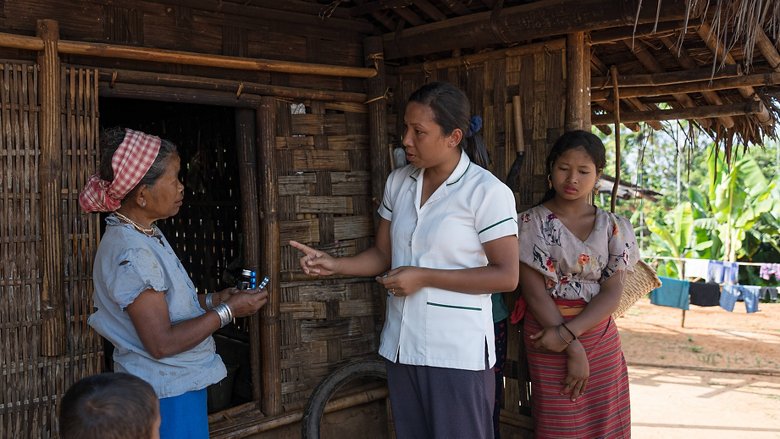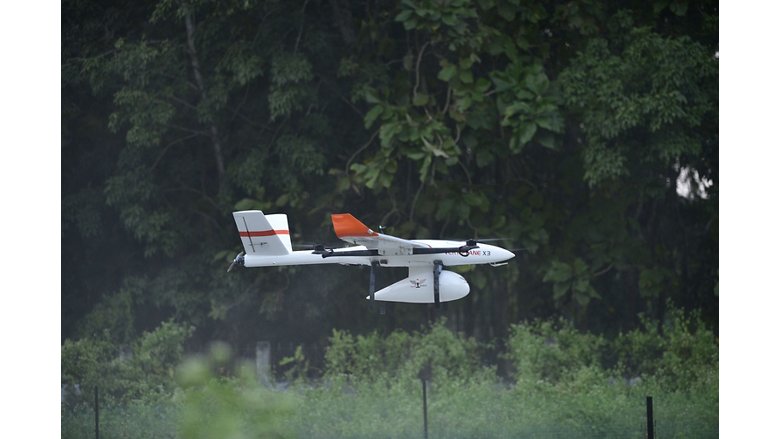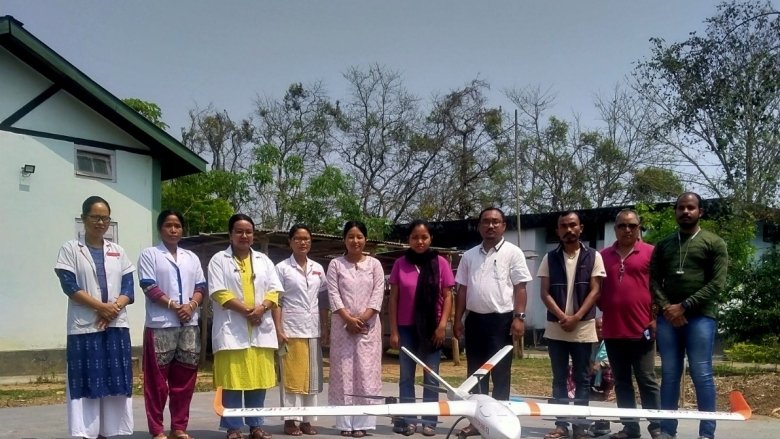For a week Eltira Sangma from the West Khasi Hills in Meghalaya, India, noticed she had no energy. “I was feeling tired all the time and did not feel like cooking for my family or doing any chores at home,” said the mother of an 11-year-old boy.
Worried, Eltira visited the Shallang Primary Health Centre (PHC) 1.5 kilometres away to seek medical advice. After some tests, she was given an iron injection.
Earlier, it would not have been so easy for her to get the injection at the health center near her village of Rongkhugre, tucked away on a distant hillside amidst green foliage and banana plantations. Crucial medicines and injections were often in short supply or too expensive at the far-flung centers.
But ever since a new drone service was introduced by the Government of Meghalaya under the World Bank financed Meghalaya Health Systems Development Project, essential injections and medicines are brought over once a week by a drone from Jengjal District Hospital over 100 kilometres away.
The medicines are also free of cost. Otherwise, the injection, which needed to be administered three times a week, would have cost Eltira Rs. 280 each time.
